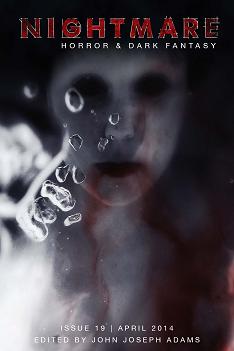Reviewed by Lillian Csernica
“Sleep Paralysis” by Dale Bailey
An aging mortician suffers horrifying dreams that leave him paralyzed. Only the touch of his trophy wife brings him any relief. His nights are still disrupted by the dreams of a strange figure sneaking in through the window and the sudden paralysis. A colleague comments on the rumors circulating about what the mortician’s young wife is really up to when she’s out organizing or attending charitable events. When the mortician finally retires to spend more time with his wife, she keeps making excuses which delay her own retirement from the fundraiser circuit. The nightmares reach a climax that mingles a lifetime’s terror with present anxieties. The mortician emerges from it refreshed and ready to reopen his business. The simple truth here is that I spotted the ending the minute the colleague made oblique reference to possible infidelity. Maybe I watch too much Dexter, but when the main character has the skills and the tools, something tells me that by the end of the story he’s going to use both.
“It Was Never the Fire” by Martin Cahill
The high school loner and a misfit obsessed with smoke become companions. “Smokey” thinks he can learn the true essence of something by lighting it on fire and breathing in the smoke. The loner’s memories hint at serious abuse by his father or whomever his mother was sleeping with at the time. “Smokey” has a sister whose efforts to have a life separate from Smokey and his obsession result in tragic consequences. “Smokey’s” crush on the loner’s sister leads to a final confrontation and a fiery climax, but that’s not the end of the story.
The characters and settings reminded me of Harlan Ellison’s juvenile delinquent stories. “Smokey” and the loner are both broken, both trying to survive what’s been done to them and what they will have to endure because of what they do. The story has one main weakness. “Smokey’s” bizarre mysticism brings fantastical elements into the story that just don’t add up. They’re intended to bring full shuddery meaning to the denouement. I was left with the unhappy and all too familiar image of the abuse cycle repeating itself in a new generation.
 Nightmare #19, April 2014
Nightmare #19, April 2014